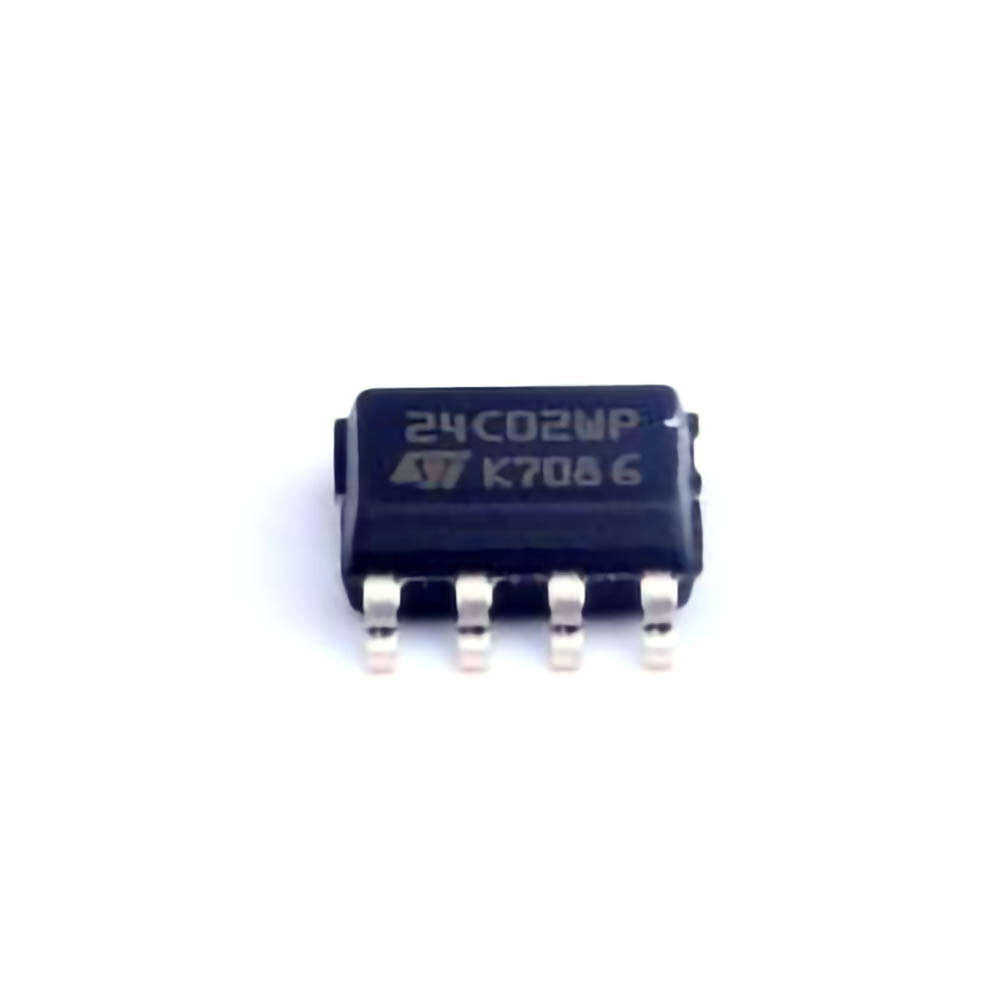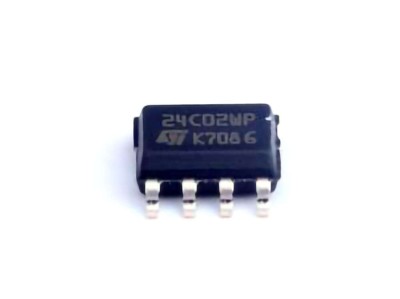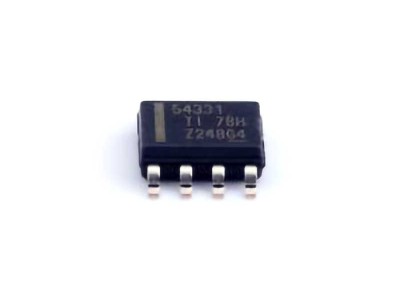
Introduction to M24C02-WMN6TP EEPROM and its Applications in Storage Circuits
In the world of Embedded systems and digital electronics, non-volatile Memory (NVM) plays a crucial role in retaining data even after Power is removed. Among the various NVM technologies, Electrical ly Erasable Programmable Read-Only Memory (EEPROM) stands out due to its ability to be rewritten multiple times without the need for power. One of the most widely used EEPROMs is the M24C02-WMN6TP, a compact, low-power device that has become integral in many storage applications across different industries.
Overview of M24C02-WMN6TP EEPROM
The M24C02-WMN6TP is a 2K-bit (256 bytes) EEPROM from STMicroelectronics. It operates over an I2C (Inter-Integrated Circuit) interface , making it easy to integrate into systems with a minimal number of pins and reduced complexity. The device has a typical voltage range of 1.8V to 5.5V, making it ideal for a wide range of applications, from low-voltage to higher-voltage systems. It is a highly efficient, reliable, and cost-effective memory solution, offering features such as:
2K-bit Memory Capacity: This allows for a modest amount of storage, which is sufficient for applications that need to store small amounts of data like configuration settings, Sensor calibration data, or simple look-up tables.
Low Power Consumption: With a typical operating current of just a few microamperes during data retention and low active current, it is suitable for battery-powered applications.
I2C Interface: The two-wire I2C Communication protocol is simple and widely adopted in microcontroller-based designs. It ensures compatibility and easy integration with various host controllers.
Write Endurance: The M24C02-WMN6TP supports up to 1 million write cycles per byte, making it highly durable for continuous data updates.
Key Applications of M24C02-WMN6TP in Storage Circuits
The M24C02-WMN6TP is used in a broad range of applications where small amounts of data need to be stored persistently. Some of the most common uses include:
Configuration Storage:
Many embedded systems and IoT devices require a non-volatile memory solution for storing configuration data. The M24C02-WMN6TP is often used in microcontroller-based designs to store settings such as communication parameters, user preferences, calibration values, or device identification. Its ability to retain data without power is crucial for ensuring that configurations remain intact even during power-down cycles or resets.
Sensor Data Logging:
In sensor-based applications, it’s often necessary to store small amounts of sensor data for later processing or transmission. The M24C02-WMN6TP is ideal for logging limited sensor readings, such as temperature, humidity, or pressure data, where large storage capacity is not required but data persistence is critical. Its low power consumption also ensures that the storage device does not unnecessarily drain the battery in portable, remote sensor applications.
Identification and Security:
The M24C02-WMN6TP can be used for storing device IDs, authentication keys, or other security-related information. In systems where secure communication is required, EEPROMs like the M24C02-WMN6TP help by providing a persistent storage location for encryption keys or other sensitive data that must remain intact even if the device loses power.
Embedded Systems and Consumer Electronics:
From wearable devices to automotive systems, the M24C02-WMN6TP is employed in a variety of consumer electronics and embedded systems. It provides an efficient solution for managing system states, firmware versioning, and user preferences in products that demand minimal space and low power consumption.
Design Considerations When Using M24C02-WMN6TP
When incorporating the M24C02-WMN6TP into storage circuits, several key factors must be taken into account to optimize its performance and reliability:
Power Supply and Voltage Levels:
The M24C02-WMN6TP operates over a wide voltage range, typically between 1.8V and 5.5V, but it is important to ensure that the supply voltage remains stable within this range for reliable operation. Systems with fluctuating or noisy power supplies may experience communication errors or data corruption, so proper voltage regulation and filtering are essential.
Communication Timing :
The EEPROM uses the I2C protocol for communication, which has certain timing requirements. It is important to ensure that the microcontroller or host system properly handles the clock speed and that the I2C bus is not too congested, especially in systems with multiple I2C devices. Overclocking the I2C bus can lead to data integrity issues and communication failures.
Write Cycle Management :
Although the M24C02-WMN6TP offers up to 1 million write cycles per byte, wear leveling should still be considered in applications that involve frequent writes. Continuous writing to the same memory address can lead to premature wear-out. In such cases, a software-based wear leveling technique can be implemented to distribute writes evenly across the memory, ensuring longevity and reliability.
Optimization Design for M24C02-WMN6TP in EEPROM Storage Circuits
To get the most out of the M24C02-WMN6TP EEPROM, it is essential to focus on optimization techniques that enhance the device's performance, reliability, and efficiency in real-world applications. This section will explore various strategies for designing systems that maximize the potential of this versatile EEPROM.
Optimizing Power Consumption
In many applications, especially battery-powered systems, power efficiency is critical. The M24C02-WMN6TP excels in low-power applications, but additional steps can be taken to minimize power consumption further:
Power-Down Mode:
The M24C02-WMN6TP features a power-down mode that minimizes current consumption when the device is not actively in use. By implementing an effective power management strategy in your design, such as putting the EEPROM into sleep mode when not needed, you can significantly extend battery life.
Low-Power I2C Communication:
The I2C interface can also be optimized for power efficiency by adjusting the clock speed. Reducing the I2C clock speed can lower the overall power consumption of the EEPROM and the host system, though care must be taken not to compromise communication speed.
Efficient Memory Usage:
Efficient memory utilization is another key aspect of low-power design. By structuring the data stored in the EEPROM carefully and only writing necessary information, you can reduce the frequency of write operations, which helps to maintain low power consumption and extend the EEPROM’s lifespan.
Improving Data Integrity and Reliability
Data integrity is paramount in any storage application, especially when working with embedded systems that control critical operations. The M24C02-WMN6TP offers robust data retention, but there are several ways to ensure that data remains accurate and secure over time:
Error Detection and Correction:
To safeguard data stored in the EEPROM, error detection and correction algorithms can be implemented. Techniques such as checksums, cyclic redundancy checks (CRC), or even more sophisticated error correction codes (ECC) can detect potential errors in stored data, which is crucial for systems with high data reliability requirements.
Redundancy and Backup:
For systems where data integrity is of the utmost importance, consider implementing a redundancy strategy. This can involve storing critical data in multiple memory locations or using a combination of EEPROMs for backup purposes. In case of corruption or failure in one memory location, the system can recover from the redundant copy.
Wear Leveling:
As discussed earlier, wear leveling is crucial for ensuring the longevity of the EEPROM. For designs with high-frequency write operations, a wear leveling algorithm can ensure that writes are evenly distributed across the entire memory, preventing specific locations from wearing out prematurely.
Enhancing System Performance
Maximizing the performance of the M24C02-WMN6TP involves optimizing both the hardware and software components of the system:
Optimal I2C Communication:
The M24C02-WMN6TP supports I2C communication, which can be optimized for better performance. By carefully managing bus speeds, minimizing bus contention, and ensuring that the I2C signals are clean (avoiding noise and interference), the overall communication efficiency can be improved.
Burst Mode and Block Writes:
For applications that need to write large chunks of data to the EEPROM, block write operations can improve efficiency. Instead of writing byte-by-byte, block writes allow multiple bytes to be written in a single operation, significantly reducing the time and overhead associated with multiple write cycles.
Memory Mapping:
Efficient memory mapping can also help in optimizing system performance. Organizing the data stored in the EEPROM for fast access or using memory addressing schemes that minimize the time it takes to retrieve or update data is important for high-performance systems.
Conclusion
The M24C02-WMN6TP EEPROM is a powerful and flexible memory solution for modern embedded systems. By understanding its features and capabilities, as well as applying thoughtful optimization techniques, engineers can design systems that leverage its low-power operation, high endurance, and reliability. Whether used in configuration storage, sensor data logging, or security applications, this EEPROM continues to be a cornerstone in a wide variety of electronics, offering significant advantages in performance, cost, and energy efficiency.
If you are looking for more information on commonly used Electronic Components Models or about Electronic Components Product Catalog datasheets, compile all purchasing and CAD information into one place.


